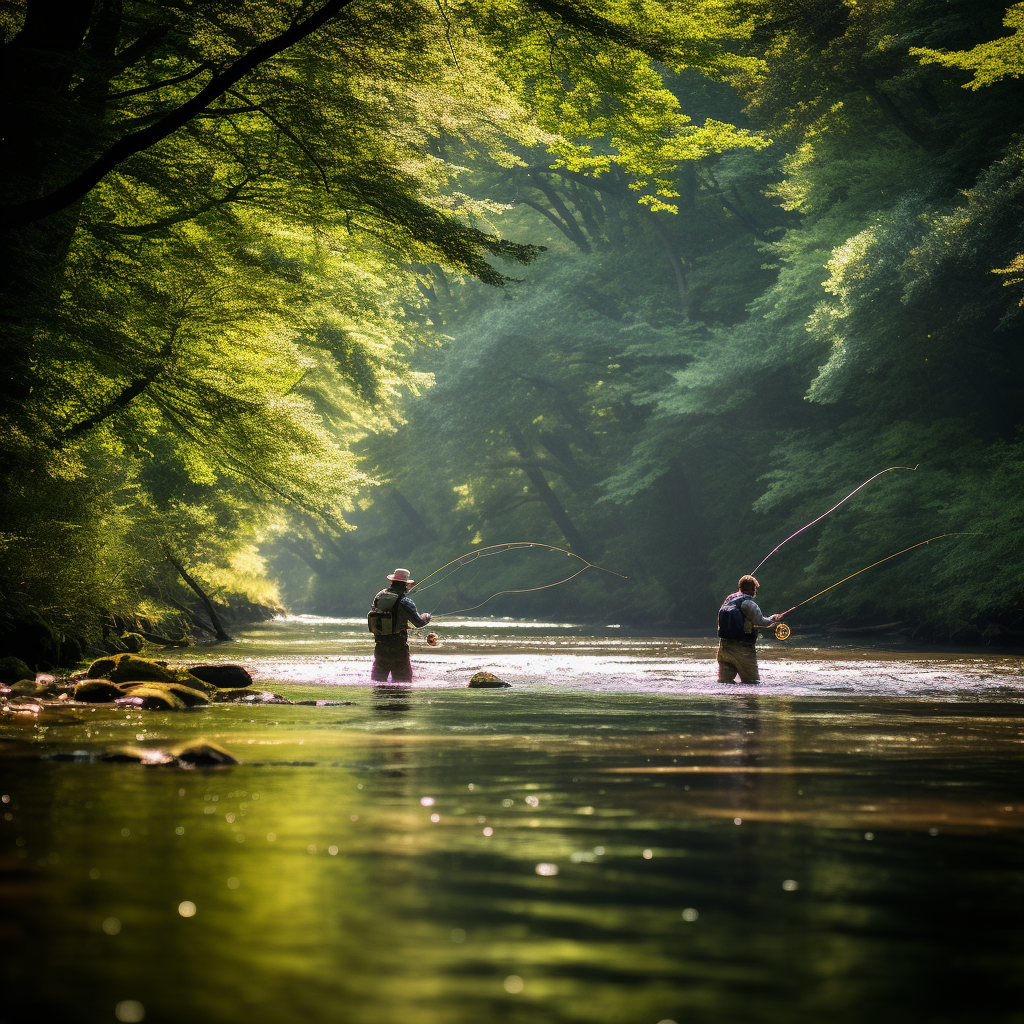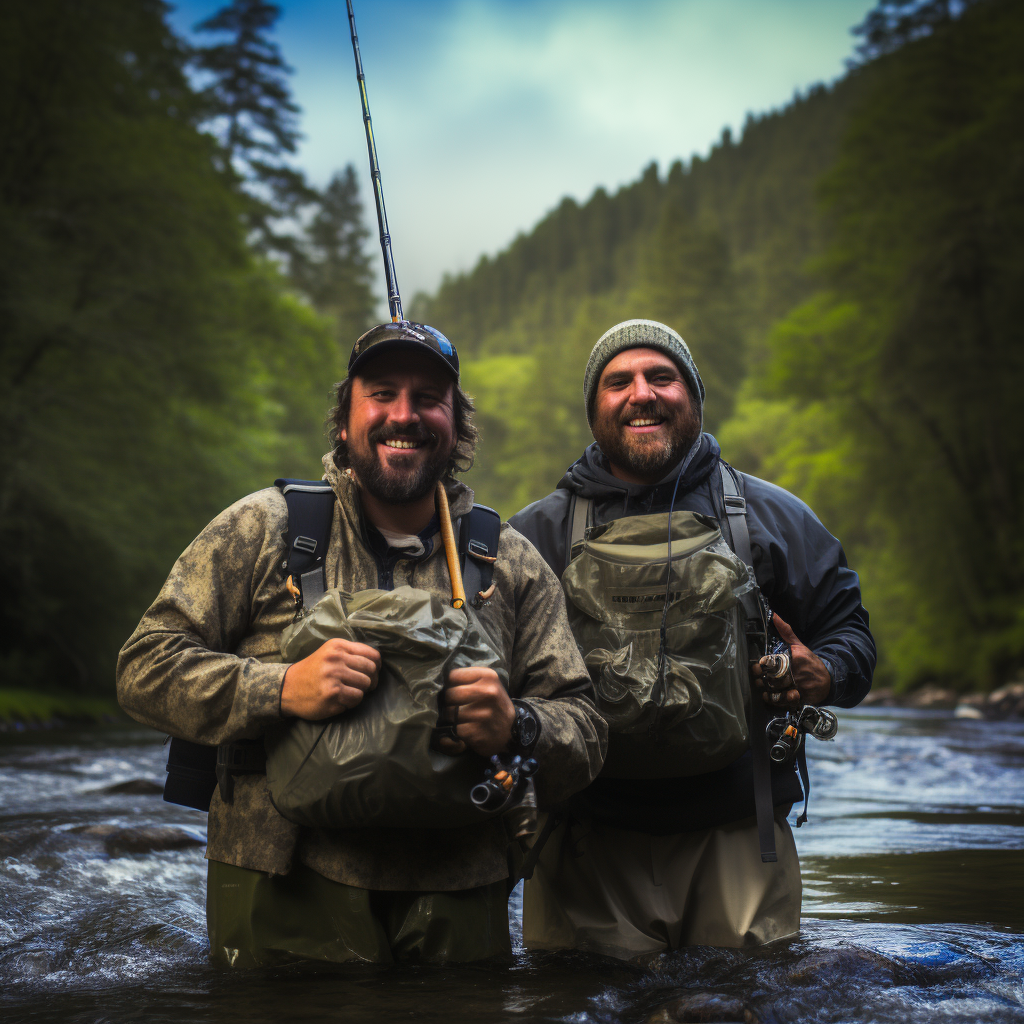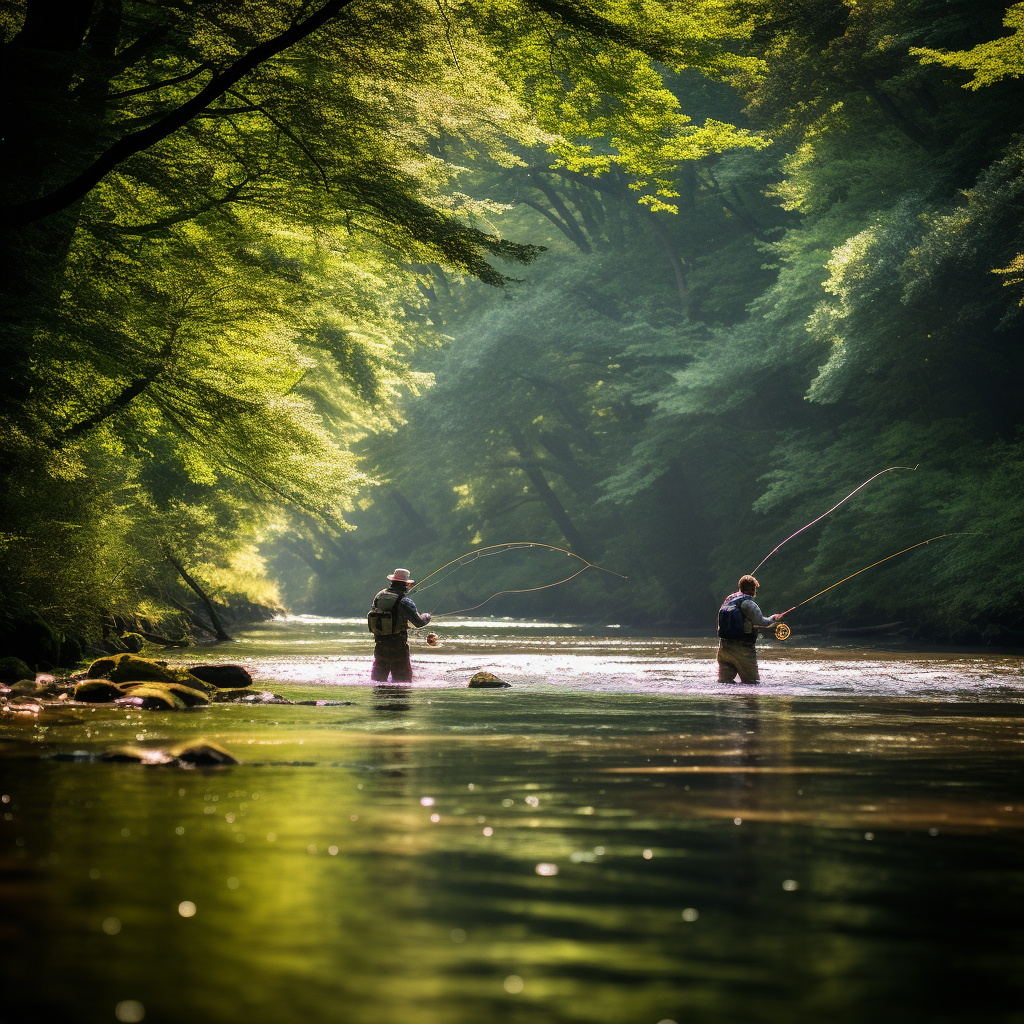
Hey there, friend! Get ready to cast your worries away and dive into the exciting world of fly fishing. I can’t wait to share this incredible adventure with you and show you just how magical this sport can be. Whether you’re seeking tranquility, a chance to connect with nature, or simply a new hobby, fly fishing has it all. So, let’s grab our gear, wade into the water, and begin our journey together!
First things first, let’s talk about the heart of fly fishing: the fly rod and reel. Unlike traditional fishing, fly fishing uses a lightweight rod and a special reel designed to cast a nearly weightless artificial fly. The rod’s length and weight are determined by the type of water you’ll be fishing in, so choose accordingly. For beginners, a 9-foot, 5-weight rod is a versatile choice that suits most fishing situations.
Now, let’s move on to the most exciting part—the flies! Flies are artificial imitations of insects or other small creatures that fish prey upon. They come in a variety of shapes, sizes, and colors. As a beginner, start with a few basic patterns like dry flies, nymphs, and streamers.
Let’s dive a little deeper into the fascinating world of flies and their purposes in fly fishing. As I mentioned earlier, flies are designed to imitate the insects or small creatures that fish love to feast on. Here are the three main types of flies and when to use them:
- Dry Flies: These are designed to float on the water’s surface and mimic adult insects like mayflies, caddisflies, or stoneflies. Dry flies are perfect for when you see fish rising to the surface to feed on insects. They are cast upstream and allowed to float naturally downstream, enticing fish to rise and strike. Pay attention to the size and color of the natural insects present to choose a matching dry fly.
- Nymphs: Nymphs imitate the immature stage of insects that live underwater. They sink below the surface and are meant to be fished near the bottom of the water column, where the majority of aquatic life resides. Nymph fishing is highly effective as fish often feed on nymphs during their underwater stage. Cast your nymph upstream and let it drift naturally with the current, imitating the natural movement of these underwater insects.
- Streamers: Streamers imitate small baitfish, leeches, or other larger aquatic creatures. These flies are larger, often colorful, and provoke an aggressive response from predatory fish. Streamer fishing involves casting across or downstream and retrieving the fly with short, quick strips to mimic the movement of fleeing prey. This method can be exhilarating as it often elicits explosive strikes from fish.
Remember, the key to successful fly fishing is observation and adaptation. Pay attention to the behavior of fish and the insects present in the environment. Adapt your fly selection based on what the fish are actively feeding on at any given time. Don’t be afraid to experiment and try different patterns until you find what works best. With time, you’ll develop a keen eye for matching the hatch and choosing the right fly to entice those elusive trout, bass, or other game fish.
Next up is the casting technique. Fly casting is an art in itself, but don’t let that intimidate you. With a little practice, you’ll be making those graceful loops in no time. Begin by mastering the basic overhead cast. Stand with your feet shoulder-width apart, hold the rod firmly but not too tightly, and smoothly accelerate the rod backward before making a forward cast. Remember, it’s all about timing and a smooth release. Don’t worry if your first few casts don’t go as planned; learning to cast takes patience and practice.
Now that you have the fundamentals down, it’s time to hit the water! When you’re fly fishing, it’s crucial to understand the water and its inhabitants. Observe the surface for any signs of fish activity, such as rising fish or insects skimming the water. Look for likely holding spots like submerged rocks, fallen trees, or calm eddies. Fish are often found in these areas seeking shelter and food. Approach the water stealthily, as fish can be easily spooked, and try to present your fly naturally to entice a strike.
Lastly, let’s talk about the joy of catch and release. As responsible anglers, we prioritize the conservation of fish populations and their habitats. When you catch a fish, handle it gently, wet your hands to protect its protective slime, and carefully remove the hook. Always keep the fish in the water as much as possible, supporting its weight until it’s ready to swim away. Remember, we’re here to enjoy the experience and create lasting memories, so let’s respect the ecosystem that brings us so much joy.
I hope this beginner’s guide has ignited your passion for fly fishing and given you the confidence to embark on this incredible adventure. As we immerse ourselves in the beauty of nature, we’ll discover not only the thrill of landing a fish but also the peace and serenity that come with being on the water. So grab your gear, let’s make some memories, and create stories that we’ll cherish for a lifetime. Tight lines, my friend!

